Biophilic Design for Workplace Wellness: Enhancing Employee Wellbeing
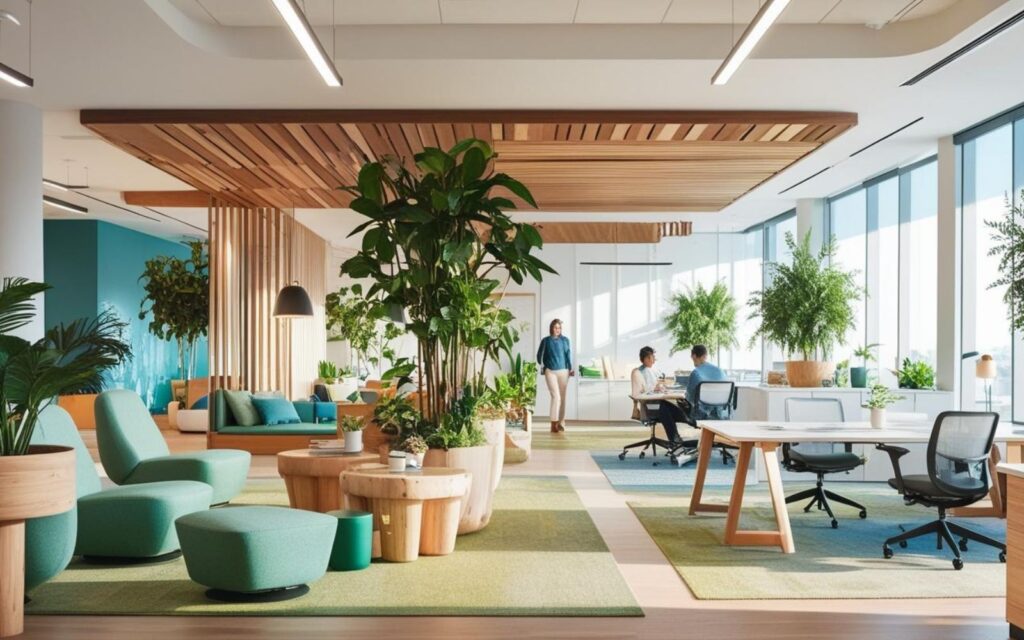
Have you ever felt an instant mood boost after entering a space filled with natural light, lush greenery, and earthy textures? That’s the power of biophilic design for workplace wellness.
By incorporating natural elements like indoor plants, natural materials, and green walls, businesses create workspaces that improve employee well-being, boost productivity, and promote physical and mental health.
In this article, we’ll dive into the benefits of biophilic design, practical ways to integrate it into your office environment, and why connecting to the natural world is essential for workplace success.
Key Takeaways
- Biophilic design enhances employee productivity, well-being, and overall workplace health.
- Core components like natural light, living walls, and natural textures create a positive impact.
- Implementing biophilic elements can reduce stress, improve cognitive function, and promote better physical and mental well-being.
- Small changes, such as adding potted plants or nature-inspired artwork, can transform your office space.
What Is Biophilic Design?
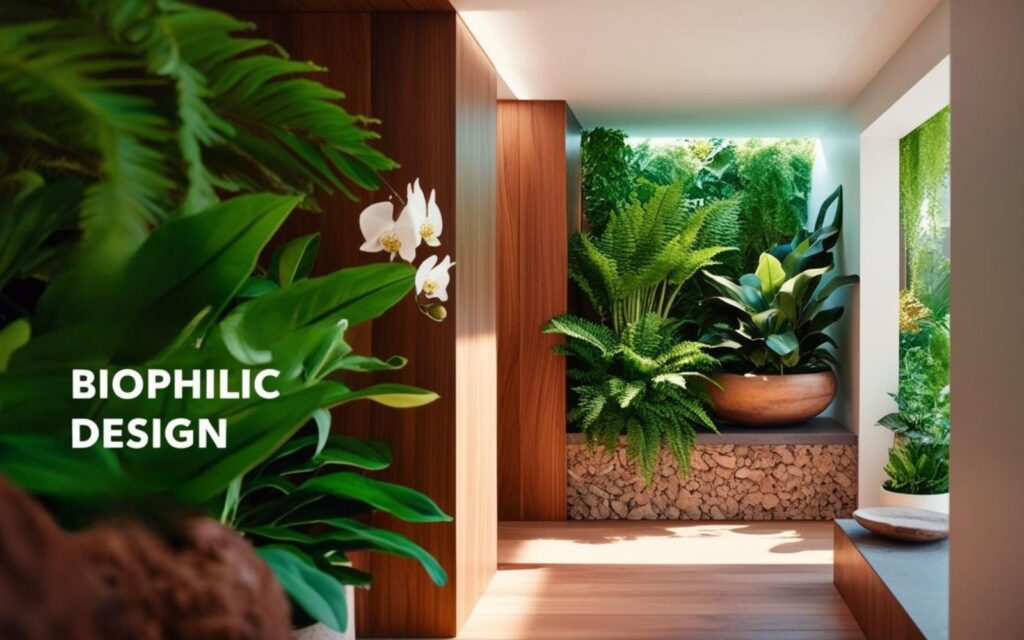
Biophilic design is a concept that integrates the natural world into indoor spaces.
Based on the idea that humans possess an innate desire to connect with nature, this design principle uses biophilic elements to create spaces that foster human health and happiness.
In workplaces, biophilic design prioritizes natural environments, improving workplace well-being and reducing mental fatigue for office workers.
By reconnecting employees with nature indoors, businesses can create spaces that promote physical well-being, reduce stress, and inspire employee creativity.
Benefits of Biophilic Design for Workplace Wellness
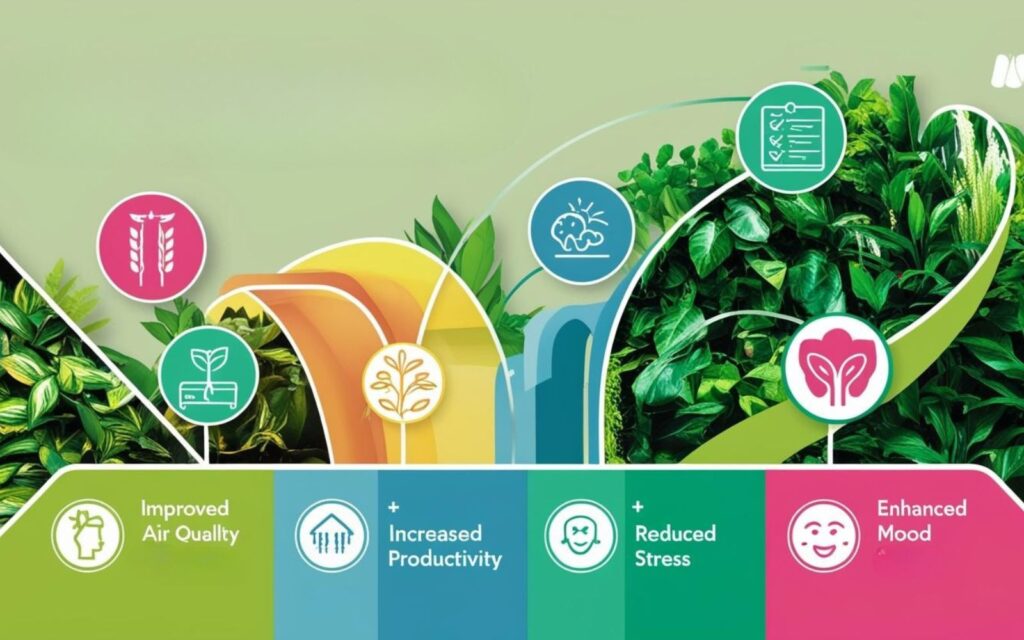
1. Improved Physical and Mental Health
- Natural elements like plants and light can lower blood pressure and reduce stress.
- Exposure to fresh air and green spaces enhances physical health and supports mental well-being.
- Spaces designed with biophilic design principles help prevent mental fatigue, promoting sharper focus and better mood.
2. Boosted Employee Productivity
- Studies show that biophilic workplaces improve task performance and cognitive function.
- Office workers surrounded by nature indoors report higher levels of job satisfaction and employee creativity.
3. Enhanced Air Quality
- Plants like ferns and pothos improve indoor air quality, reducing reliance on air conditioning and promoting healthier breathing.
4. Psychological Restoration
- Biophilic design elements offer calming environments that reduce stress and encourage psychological restoration, resulting in happier employees.
5. Encouragement of Sustainable Practices
- Biophilic spaces often incorporate sustainable practices, such as using eco-friendly materials and prioritizing natural environments, benefiting both employees and the planet.
Key Biophilic Design Elements to Include
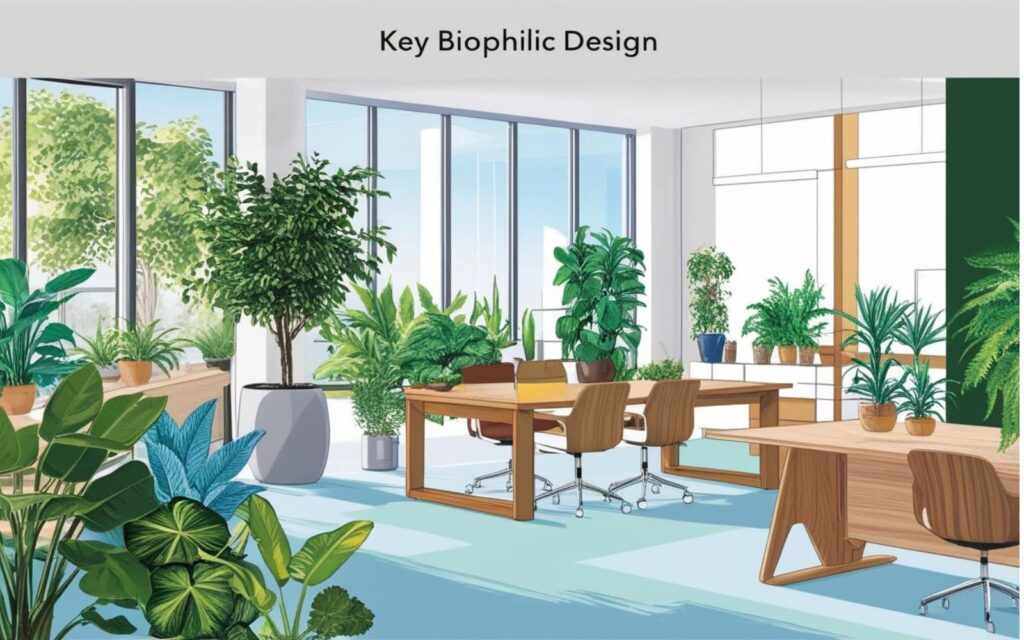
To fully integrate biophilic design principles into your workspace, focus on these essential elements:
1. Natural Light
- Maximize sunlight by placing workstations near windows or installing skylights.
- Use daylight-mimicking LED lights where natural light is limited.
2. Indoor Plants and Green Walls
- Add potted plants like peace lilies or pothos to desks and common areas.
- Install living walls or vertical gardens to create visual interest and improve air quality.
3. Natural Materials and Textures
- Use natural wood, stone, and bamboo in furniture and decor.
- Incorporate natural textures like wool rugs or linen fabrics for a cozy feel.
4. Nature-inspired artwork and Visual Representations
- Hang nature-inspired artwork, murals, or photography that depicts natural landscapes or green spaces.
- Use visual representations of water or greenery to bring the outdoors in.
5. Water Features and Fresh Air
- Add small water features, like fountains or aquariums, to promote relaxation and connection to nature.
- Ensure proper ventilation to bring in fresh air and improve overall well-being.
How to Start Incorporating Biophilic Design

Ready to transform your office environment? Here’s a step-by-step approach to get started with biophilic design:
Step 1: Assess Your Space
- Identify areas with poor lighting or ventilation.
- Note where employees spend the most time, such as desks or meeting rooms.
Step 2: Start Small with Plants
- Introduce potted plants to desks, break rooms, and reception areas.
- Use plants that require minimal maintenance, like snake plants or succulents.
Step 3: Let in Natural Light
- Rearrange furniture to optimize exposure to windows.
- Replace heavy curtains with sheer ones to let in more light.
Step 4: Incorporate Nature-Inspired Design
- Use furniture made of natural materials and colors inspired by the natural world.
- Add nature-inspired artwork or decor for visual appeal.
Step 5: Create Green Spaces and Relaxation Zones
- Set up areas with living walls, natural textures, and comfortable, relaxing seating.
- Use outdoor spaces, like patios or gardens, for employee breaks or collaborative meetings.
Step 6: Prioritize Proper Maintenance
- Regularly care for indoor plants and ensure proper lighting for their growth.
- Maintain living walls and ensure water features function smoothly.
Real-Life Examples of Biophilic Workplaces
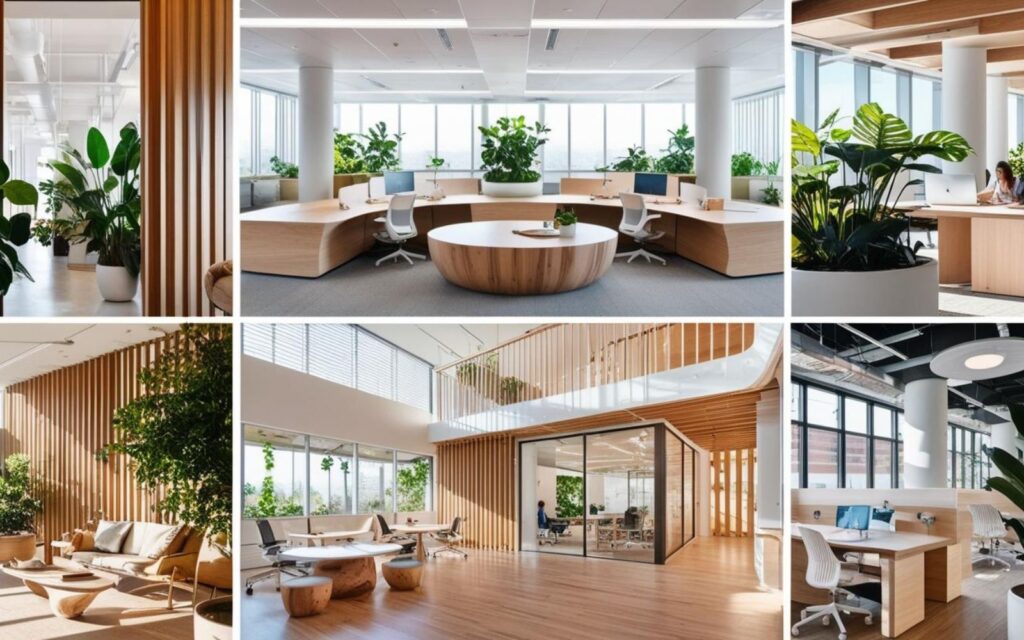
1. Google’s Offices
Known for its open layouts, natural materials, and green walls, Google prioritizes employee well-being through nature-inspired design.
2. Amazon’s Spheres
These giant glass domes with plants offer office workers access to fresh air, reducing stress and promoting creativity.
3. Microsoft Headquarters
Microsoft incorporates outdoor spaces and natural elements to enhance workplace health and encourage physical activity.
Summary
Biophilic design for workplace wellness is more than just a trend-it’s a proven way to improve employee productivity, cognitive performance, and overall well-being.
By incorporating natural elements like natural light, indoor plants, and nature-inspired artwork, businesses can create spaces that promote mental health, physical well-being, and sustainability.
Start small with potted plants or rearrange your office design to embrace the natural world and see the positive impact on your team’s employee health and satisfaction.
Frequently Asked Questions
What Are the Key Benefits of Biophilic Design for Workplace Wellness?
Biophilic design brings the natural world into the office environment, improving physical and mental health, enhancing air quality, and boosting employee productivity.
How Can I Start Incorporating Biophilic Elements Into My Office Space?
Start small by adding indoor plants, maximizing natural light, and using natural materials like wood and stone in your decor.
What Are Living Walls and How Do They Help?
Living walls are vertical gardens that improve air quality, add visual interest, and promote a sense of calm, reducing stress for office workers.
Are There Health Benefits to Biophilic Design?
Yes! Biophilic design principles lower blood pressure, enhance mental well-being, and improve cognitive function, benefiting employee health.
Can Biophilic Design Work in Small Offices?
Absolutely! Small changes, such as adding potted plants, using nature-inspired artwork, or letting in more natural light, can make a big difference, even in compact spaces.

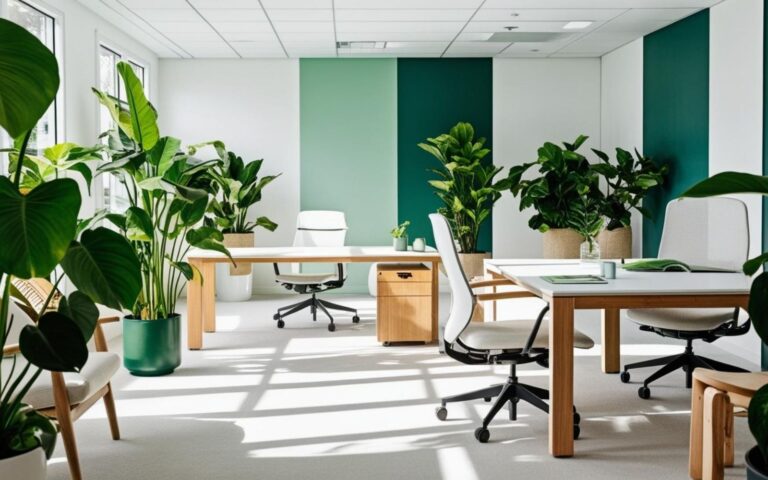




2 Comments